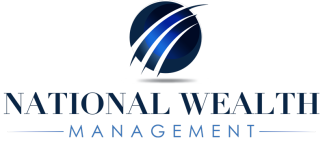
The Difference Between CPP and OAS (Canada Pension Plan vs Old Age Security)
Last Updated: February 23, 2023
The Old Age Security (OAS) pension and the Canada Pension Plan (CPP) are two important retirement income programs in Canada. While both programs provide financial support to Canadians during their retirement years, they have some distinctions that it is important to understand. So, what is the difference between CPP and OAS?
Funding Sources
The main difference between OAS and CPP is their source of funding. CPP is a mandatory contributory pension plan that is funded through contributions from both employees and employers. The more you put into it, the more you’ll get out of it. In order to contribute to your CPP, you must be age 18 or older, earn more than $3,500 per year and live outside of Quebec (Quebec residents can open their own Quebec Pension Plans instead).
OAS benefits, on the other hand, are a federally funded pension program. It’s a non-contributory plan, funded through a percentage of income tax that all Canadians pay. To be eligible for OAS benefits, you must have been a citizen or legal resident of Canada for at least 10 years after age 18.
Payment Eligibility
To be eligible for CPP, you must have contributed to the plan while you were working and be at least 65 years old. In some cases, you may also be eligible for benefits as early as age 60, at a reduced rate, but the longer you wait, the more it will benefit you. If you’re able to wait until you reach age 70 to cash in on your benefits, your monthly payment rate will increase. In general, your monthly benefit amount is determined by how much you and your employer paid into CPP over the course of your career.
You must also be 65 years old to qualify for OAS benefits, but you don’t have to be retired to start receiving payments. Similar to CPP, if you hold off until age 70 to access your benefits, you’ll enjoy higher monthly payments. Your monthly benefit amount is determined by how many years you have been a resident of Canada since age 18. Both CPP and OAS are taxable benefits.
Supplementary Programs
Both retirement programs have supplementary benefits available to certain groups of people. In addition to retirement pension, CPP offers:
- Survivor’s pension: a monthly payment that is available to the surviving spouse or common-law partner of a deceased CPP contributor. To be eligible for the survivor’s pension, the surviving spouse or common-law partner must be at least 60 years old, and the deceased contributor must have contributed to the CPP for at least one-third of their working life. The amount of the survivor’s pension is based on the contribution history of the deceased contributor and is paid in addition to any other CPP benefits the surviving spouse or common-law partner may be entitled to receive. The survivor’s pension is intended to help provide financial support to the surviving spouse or common-law partner during their retirement years.
- Children’s Benefits: monthly payments that are available to dependent children of a deceased or disabled CPP contributor. To be eligible for CPP children’s benefits, the child must be under the age of 18 or between the ages of 18 and 25 and attending school full-time. The amount of the CPP children’s benefit is based on the contribution history of the deceased or disabled contributor and is paid in addition to any other CPP benefits the child may be entitled to receive. The CPP children’s benefit is intended to help provide financial support to dependent children in the event of the loss of a parent or if the parent becomes disabled.
- Disability benefits: a monthly payment available to Canadians who cannot work due to a severe and prolonged disability. To be eligible for the CPP disability benefit, you must have made sufficient contributions to the CPP and be under the age of 65. You must also meet the definition of “severe and prolonged disability” as defined by the CPP legislation. The amount of the CPP disability benefit is based on your contributions to the CPP and is intended to help provide financial support while you are unable to work due to your disability. In addition to the CPP disability benefit, you may also be eligible for other disability-related benefits, such as the Disability Tax Credit and the Registered Disability Savings Plan.
- Post-retirement benefits: paid to individuals receiving a CPP retirement pension and still working. To be eligible for these benefits, you must be at least 60 years old and have contributed to the CPP during your working years. The amount of the post-retirement benefit is based on the amount of your CPP retirement pension and the amount of your earnings from employment or self-employment. It is important to note that the CPP post-retirement benefit is not intended to replace your retirement income, but rather to provide additional financial support while you are still working. If you are receiving a CPP retirement pension and continue to work, you can continue contributing to the CPP and may be eligible to receive additional post-retirement benefits. It is important to keep in mind that the CPP post-retirement benefit may affect your other government benefits, such as Old Age Security, and it may also be taxable.
OAS offers supplementary benefits, including Guaranteed Income Supplement (GIS) for low-income retirees, as well as Allowance and Allowance for the Survivor, for spouses and widowed spouses of GIS recipients. GIS and Allowance are both non-taxable benefits.
Payment Amounts
The amount of CPP you receive is based on your contributions to the plan and the number of years you have contributed. For 2023, the maximum monthly amount you could receive as a new recipient starting the pension at age 65 is $1,306.57. The average monthly amount paid for a new retirement pension (at age 65) in October 2022 is $717.15. Your situation will determine how much you'll receive up to the maximum.
The maximum OAS monthly benefit payment for the first quarter of 2023 will be $687.56 for those between ages 65 and 74, while the amount for those 75 and older will be $756.32.
If your net world income exceeds the threshold ($81,761 for 2022), you must repay part of (or in cases, your entire) pension through the OAS recovery tax. Your repayment calculation is based on the difference between your income and the threshold amount for the year. The first step is to figure out how much higher your income is than the threshold. You must repay 15% of that amount.
Setting Yourself Up for Retirement Success
In summary, when it comes to CPP vs OAS, they are two crucial retirement income programs in Canada that provide financial support to Canadians during their retirement years. While they have some similarities, they also have some important differences in terms of eligibility, funding, amount of benefits, and types of benefits. Understanding these differences can help you plan for your retirement and ensure that you have the financial support you need during this important stage of your life.
Preparing for retirement can be confusing and overwhelming, but there are many programs in place to make sure you have the resources you need to continue living your best life after your career. If you’re still unsure about eligibility for retirement benefits or supplemental programs, the amounts of your monthly payments or simply how you can make smart financial decisions during retirement, speaking with a financial professional can help.
If you're ready to start planning for retirement, our easy-to-use tool can help get the ball rolling. We encourage you to take advantage of our free financial assessment through Planswell. It's a simple and easy way to get started on your financial planning journey. Once the assessment is complete, we can discuss your options and how our services can benefit you.
*This content is developed from sources believed to be providing accurate information. The information provided is not written or intended as tax or legal advice and may not be relied on for purposes of avoiding any Federal tax penalties. Individuals are encouraged to seek advice from their own tax or legal counsel. Individuals involved in the estate planning process should work with an estate planning team, including their own personal legal or tax counsel. Neither the information presented nor any opinion expressed constitutes a representation by us of a specific investment or the purchase or sale of any securities. Asset allocation and diversification do not ensure a profit or protect against loss in declining markets. This material was developed and produced by Advisor Websites to provide information on a topic that may be of interest. Copyright 2025 Advisor Websites.

